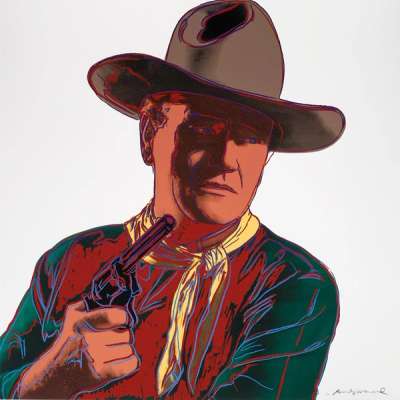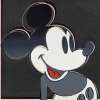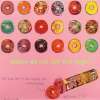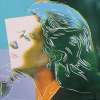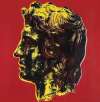John
Wayne
In 1986, Pop Art master Andy Warhol created a series of artworks featuring several figures from his favourite Western films. Within the collection, titled Cowboys and Indians, his portrait of John Wayne is now recognised as one of his most iconic, reflecting his fascination with film and celebrity. This was one of Warhol’s last major works before his untimely death in 1987.
Andy Warhol John Wayne For sale
John Wayne Value (5 Years)
Works from the John Wayne series by Andy Warhol have a strong market value presence, with 22 auction appearances. Top performing works have achieved standout auction results, with peak hammer prices of £225000. Over the past 12 months, average values across the series have ranged from £140000 to £225000. The series shows an average annual growth rate of 18.05%.
John Wayne Market value
Auction Results
| Artwork | Auction Date | Auction House | Return to Seller | Hammer Price | Buyer Paid |
|---|---|---|---|---|---|
 John Wayne ( F. & S. II.377) Andy Warhol Signed Print | 27 Sept 2023 | Christie's London | £110,500 | £130,000 | £180,000 |
Sell Your Art
with Us
with Us
Join Our Network of Collectors. Buy, Sell and Track Demand
Meaning & Analysis
Andy Warhol's portrait of John Wayne was a part of his expansive series of celebrity portraits, standing as a noteworthy example of his engagement with fame and his distinctive artistic approach. John Wayne was an iconic figure in American cinema who was particularly known for his roles in Western films, presenting an ideal subject for Warhol's examination of celebrity culture. In this portrait, Warhol depicts Wayne in his characteristic role, encapsulating the rugged and quintessentially American archetype he portrayed on screen: Wayne is shown in the guise of a cowboy, donning a Stetson hat and necktie while pointing a revolver to the right of the composition. His face is partially obscured, with only a scowl visible. Utilising his signature style, Warhol employs bold colours and repetitive imagery, a technique consistent with his other celebrity portraits. This style not only amplifies Wayne's iconic image but also serves as a commentary on the mass-produced nature of celebrity images in popular culture. Warhol's famed screen printing technique is central to the creation of this portrait, merging photographic precision with artistic abstraction. This method enabled the artist to explore various aspects of colour and form, resulting in a portrayal that is both recognisable and stylistically distinctive.
By selecting Wayne as a subject, Warhol was commenting on American culture and the idolisation of movie stars. Wayne was often perceived as a symbol of traditional American values of masculinity, providing a perfect canvas for Warhol to explore themes of fame, identity and the construction of gendered cultural icons. The Wayne portrait is part of a broader series that includes other celebrity figures such as Marilyn Monroe, Elvis Presley, and Elizabeth Taylor. This series underscores Warhol's interest in the commodification of fame and the role of celebrities as consumer products in the media-centric world of the 20th century. More specifically within the Cowboys and Indians series, Warhol chose to represent archetypal figures and symbols that encapsulate America's romanticised and ahistorical view of the American West, as opposed to illustrating Native Americans in their historical context or portraying genuine cowboys.
Warhol used a press shot from Wayne’s 1962 film The Man Who Shot Liberty Valance to create the image. The work was the subject of controversy when it was first created, due to the fact that Wayne’s next of kin tried to sue Warhol for using the actor’s likeness without permission. In an attempt to curtail the lawsuit, Warhol recalled many of the remaining prints and had their edition numbers removed. The artist also created a series of Unique works, which feature different coloured scarves instead of the traditional yellow one. These were Warhol’s attempts at transforming each piece into a unique object, which meant that they could not legally be defined as a product and provided the artist with some protections against copyright infringement. However, following Warhol’s death, his Foundation re-numbered each Wayne print from the portfolio, and also gifted his other prints to the Wayne Family as part of a broader legal settlement.

